Analogies are comparisons that challenge student's creativity and writing skills.
Cells that make up nervous tissue allow for electrochemical signaling necessary for controlling body functions and processing incoming stimuli. The skeletal system includes the bones, tendons and ligaments. 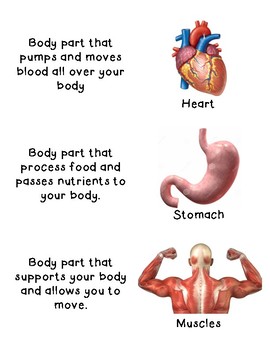 You should include how each of the six categories of function relate to your analogy. Omissions? The four main types of tissue in the human body are epithelial, muscle, nerve, and connective.
You should include how each of the six categories of function relate to your analogy. Omissions? The four main types of tissue in the human body are epithelial, muscle, nerve, and connective. 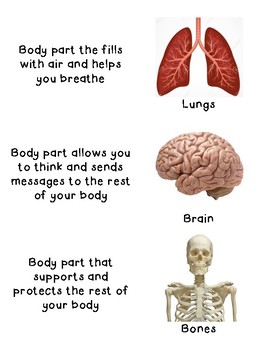 Connective tissue helps provide structure and support for the body.
Connective tissue helps provide structure and support for the body.
It serves as a solvent without which the chemistry of life could not take place. Abdomen Medical Terms & Region | What is the Region Above the Stomach? Several parts of the lungs help the body take in air, filter it, and then oxygenate the blood. A person can live with just one kidney.
In addition, such extracellular materials as hair and nails are composed of protein. A system is a collection of components that can carry out complex functions when the parts interact. It is not possible to live without these organs. Electrical impulses within the heart help ensure that it beats with a consistent rhythm and proper rate. body parts functions handouts worksheets grade flashcard set{{course.flashcardSetCoun > 1 ?
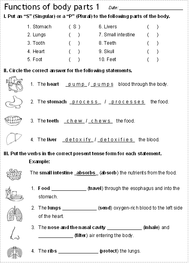 It helps maintain the bodys balance of fluid by collecting excess fluid and other particles from the blood. There are hundreds of types of cells in the human body, all working together to maintain a balanced and stable internal state, called homeostasis. To make sure you meet all the requirements, check out the criteria for success below. There are six main levels of organization within the human body: As discussed above, there are six elements that comprise most of the atoms in the human body. The protection of the human body, like the integumentary system, is analogous to the walls of a city. parts body external head outside (2017). Chief among these are calcium, phosphorus, sodium, magnesium, and iron.
It helps maintain the bodys balance of fluid by collecting excess fluid and other particles from the blood. There are hundreds of types of cells in the human body, all working together to maintain a balanced and stable internal state, called homeostasis. To make sure you meet all the requirements, check out the criteria for success below. There are six main levels of organization within the human body: As discussed above, there are six elements that comprise most of the atoms in the human body. The protection of the human body, like the integumentary system, is analogous to the walls of a city. parts body external head outside (2017). Chief among these are calcium, phosphorus, sodium, magnesium, and iron.
Iron is present mainly as part of hemoglobin, the oxygen-carrying pigment of the red blood cells. We explore. Partially digested food first travels through the small intestine, which comprises three parts: the duodenum, the jejunum, and the ileum.
 In its role as an endocrine gland, the pancreas also produces and releases insulin, which helps the body remove glucose from the blood and convert it into energy. Wakim, S., & Grewal, M. (2020). However, this does not mean that conditions affecting these organs are never life threatening or dangerous. Anatomy is the study of body parts and their structures. Anatomists usually divide the stomach into five subparts. And dont forget the part that sets humans apart from most other animals: the opposable thumb! The rectum is the last stop for feces before expulsion occurs from the anus. Our editors will review what youve submitted and determine whether to revise the article. The heart also has an electrical system within.
In its role as an endocrine gland, the pancreas also produces and releases insulin, which helps the body remove glucose from the blood and convert it into energy. Wakim, S., & Grewal, M. (2020). However, this does not mean that conditions affecting these organs are never life threatening or dangerous. Anatomy is the study of body parts and their structures. Anatomists usually divide the stomach into five subparts. And dont forget the part that sets humans apart from most other animals: the opposable thumb! The rectum is the last stop for feces before expulsion occurs from the anus. Our editors will review what youve submitted and determine whether to revise the article. The heart also has an electrical system within.
In a healthy person, the liver releases bile into the gallbladder, which the gallbladder stores and then releases to travel down the common bile duct into the small intestine to aid digestion. I want to receive exclusive email updates from YourDictionary. The muscles of the stomach help it break down and digest food. (Bone and blood are considered specialized connective tissues, in which the intercellular matrix is, respectively, hard and liquid.). Discover how organs interact with each other.
Proteins also perform numerous functional roles in the body. Pulmonary Vein Function | Where is the Pulmonary Vein Located? Human anatomy and physiology are treated in many different articles. | {{course.flashcardSetCount}} For example, the anatomy of a bone explains the physical structures that make it up, whereas the physiology defines the function, such as providing structure and support. myself body worksheets face worksheet poem vocabulary english esl eslprintables Organs work together in systems, which are made of multiple parts that can carry out complex functions. Overall, the peripheral and central nervous systems also include an extensive network of neurons. Lipidschiefly fats, phospholipids, and steroidsare major structural components of the human body. ), protecting nail beds from foreign particles; helping with grip, helping with grip (opposable; can turn back against the other fingers). 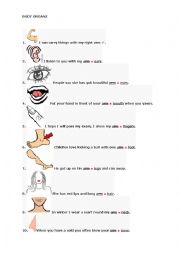 Moreover, the human brain, particularly the neocortex, is far and away the most highly developed in the animal kingdom.
Moreover, the human brain, particularly the neocortex, is far and away the most highly developed in the animal kingdom.  Learn all about the main human body systems and how they function with helpful charts and descriptions. For example, cardiologists treat heart issues, while pulmonologists study the lungs.
Learn all about the main human body systems and how they function with helpful charts and descriptions. For example, cardiologists treat heart issues, while pulmonologists study the lungs.
 https://www.britannica.com/science/human-body, LiveScience - The Human Body: Anatomy, Facts and Functions, National Institutes of Health - National Cancer Institute - Introduction to the Human Body, human body - Children's Encyclopedia (Ages 8-11), human body - Student Encyclopedia (Ages 11 and up). She is also certified in secondary special education, biology, and physics in Massachusetts. For detailed coverage of the bodys biochemical constituents, see protein; carbohydrate; lipid; nucleic acid; vitamin; and hormone. From there, the heart pumps the blood through an artery that branches to distribute blood to itself and other body parts (except the lungs).
https://www.britannica.com/science/human-body, LiveScience - The Human Body: Anatomy, Facts and Functions, National Institutes of Health - National Cancer Institute - Introduction to the Human Body, human body - Children's Encyclopedia (Ages 8-11), human body - Student Encyclopedia (Ages 11 and up). She is also certified in secondary special education, biology, and physics in Massachusetts. For detailed coverage of the bodys biochemical constituents, see protein; carbohydrate; lipid; nucleic acid; vitamin; and hormone. From there, the heart pumps the blood through an artery that branches to distribute blood to itself and other body parts (except the lungs).
Lymphatic Vessels Location, Function & Role | What are Lymphatic Vessels? Corrections? Does insulin regulate the level of sugar in the body? flashcard sets, {{courseNav.course.topics.length}} chapters | The fingerprints of koalas are almost indistinguishable from human fingerprints. (8) The endocrine system, composed of the hormone-secreting glands and tissues, provides a chemical communications network for coordinating various body processes. body parts human function matching grade 2nd (7) The nervous system, composed of the sensory organs, brain, spinal cord, and nerves, transmits, integrates, and analyzes sensory information and carries impulses to effect the appropriate muscular or glandular responses.
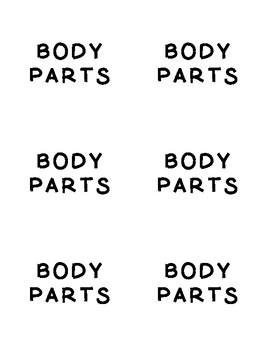
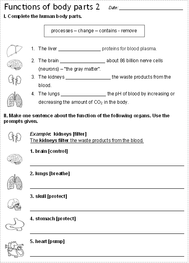
In the human body, there are five vital organs that people need to stay alive.
The body includes nine major organ systems, each composed of various organs and tissues that work together as a functional unit. Two or more tissues creates an organ. (6) The excretory system, composed of the kidneys, ureters, urinary bladder, and urethra, removes toxic nitrogen compounds and other wastes from the blood. The heart has four chambers. The transport, or cardiovascular system, is like a highway in the city, and the control, the nervous and endocrine system is like the mayor or the government. The endocrine system is the collection of glands that produce hormones and are responsible for long range communication in the body.
These are: With extensive medical care, a person can live without one lung, but they cannot survive with no lungs. This complexity of each organ and organ system means that some doctors choose to specialize in a single organ or organ system. It includes veins, arteries, capillaries, venules, and arterioles.
Arm Muscle Anatomy & Function | Names & Groups of Arm Muscles, Ventral Body Cavity | Subdivisions, Organs, & Diagram, Physiological Effects of Physical Activity, Personal Hygiene & Cleanliness for Massage Therapists. The two upper chambers are called atria, and the two lower chambers are called ventricles.
You can learn more about how we ensure our content is accurate and current by reading our.
Log in or sign up to add this lesson to a Custom Course. body parts functions systems worksheet lesson grade planet reviewer rating curated reviewed lessonplanet These external body parts are easy to see on the average person.
Non-vital organs are those that a person can survive without. Some examples of organ systems and the functions they perform are the nervous system performing electrochemical communication, the excretory system regulating salt and water balance, and the skeletal system providing structure and support.
She has a Master's Degree in Cellular and Molecular Physiology from Tufts Medical School and a Master's of Teaching from Simmons College.
We link primary sources including studies, scientific references, and statistics within each article and also list them in the resources section at the bottom of our articles. body systems human chart function parts science anatomy subject Regulatory Requirements for Healthcare Informatics, How the Inner Ear Supports Hearing and Your Sense of Balance.
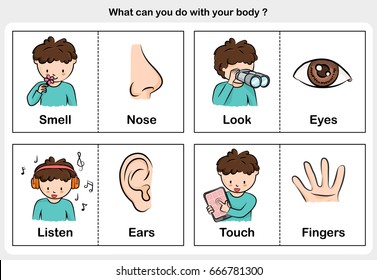
Each organ in the body is its own complex system, made up of numerous smaller parts. | 40 It forms the core of the central nervous system by creating, sending, and processing nerve impulses, thoughts, emotions, physical sensations, and more. Chemically, the human body consists mainly of water and organic compoundsi.e., lipids, proteins, carbohydrates, and nucleic acids.
Keep reading to learn body part names and basic functions of the parts of the body. The human body consists of trillions of cells, each capable of growth, metabolism, response to stimuli, and, with some exceptions, reproduction. Proteins also serve as a major structural component of the body. You should choose a system with many different parts, just like the human body has. The brain is the bodys control center. This list of body parts divides the legs into different sections according to location and function. https://www.cancer.ca/en/cancer-information/cancer-type/stomach/stomach-cancer/the-stomach/?region=on, https://www.hopkinsmedicine.org/health/conditions-and-diseases/anatomy-of-the-brain, https://www.stanfordchildrens.org/en/topic/default?id=anatomy-of-the-skin-85-P01336, https://www.britannica.com/science/human-muscle-system, https://www.ck12.org/biology/digestive-system-enzymes/lesson/Enzymes-in-the-Digestive-System-MS-LS/, https://training.seer.cancer.gov/anatomy/reproductive/female/, https://www.yourhormones.info/hormones/ghrelin/, https://www.ncbi.nlm.nih.gov/books/NBK279393/, https://www.lung.org/lung-health-diseases/how-lungs-work, https://www.nhlbi.nih.gov/health-topics/how-heart-works, https://www.stanfordchildrens.org/en/topic/default?id=how-the-liver-works-90-P02006, https://www.lung.ca/lung-health/lung-info/how-your-lungs-work, https://training.seer.cancer.gov/anatomy/nervous/, https://training.seer.cancer.gov/anatomy/reproductive/, https://www.britannica.com/science/lymphatic-system, https://training.seer.cancer.gov/anatomy/reproductive/male/, https://www.hormone.org/what-is-endocrinology/the-endocrine-system, https://columbiasurgery.org/pancreas/pancreas-and-its-functions, https://bio.libretexts.org/Bookshelves/Human_Biology/Book%3A_Human_Biology_(Wakim_and_Grewal)/10%3A_Introduction_to_the_Human_Body/10.4%3A_Human_Organs_and_Organ_Systems, https://blog.dana-farber.org/insight/2017/03/what-does-the-gallbladder-do/, https://www.niddk.nih.gov/health-information/digestive-diseases/digestive-system-how-it-works, https://www.niddk.nih.gov/health-information/kidney-disease/kidneys-how-they-work, How and why finding meaning in life can improve well-being, Displacement and health: 'The anti-immigrant rhetoric needs to stop', Type 2 diabetes: 10-hour eating window may improve blood sugar, Gut disorders and Alzheimer's: Scientists find genetic link, LGBTQ youth: Discrimination trauma may increase suicide risk by more than 3 times, What is the function and structure of the lungs, and how to do a lung function test.